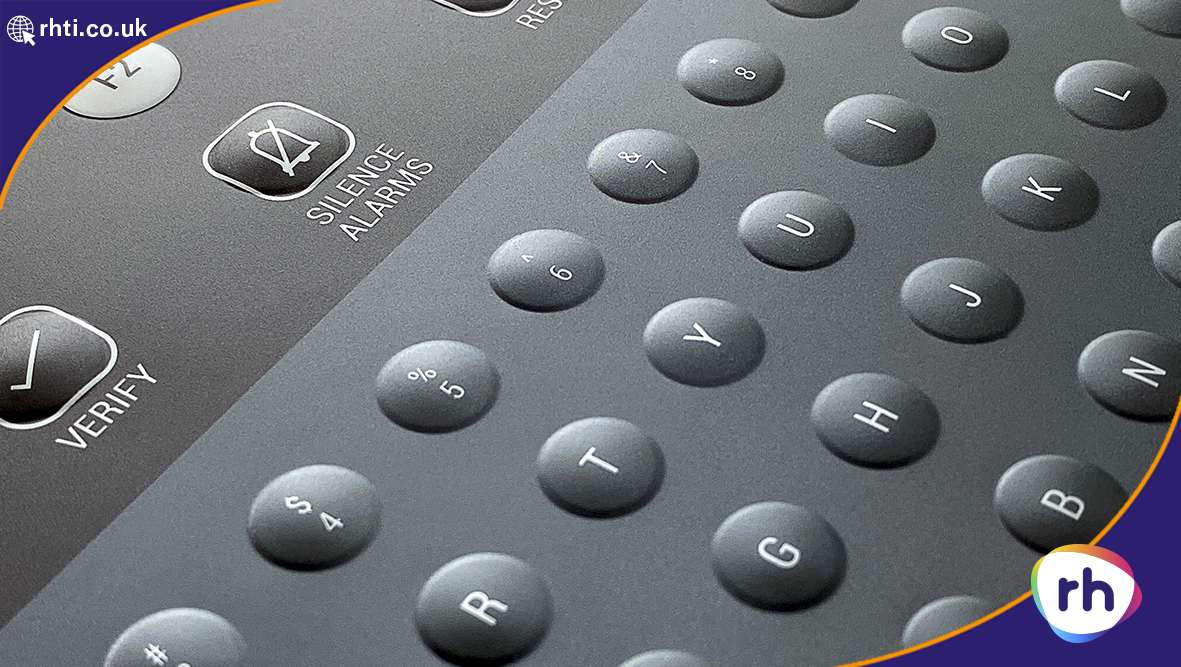 Add My Company
Add My Company

Polyester or Polycarbonate: Choosing the Right Material for Your Project
When designing graphic overlays and membrane keypads, selecting the right material is paramount to ensuring product longevity and performance. Two common choices are polyester or polycarbonate. While both offer unique advantages, understanding their characteristics is crucial for making an informed decision.
Polyester: The Durable Champion
Polyester, often referred to as PET, has earned a reputation for its exceptional durability. It’s a tough, resilient material that can withstand the rigors of various environments. Its resistance to chemicals, abrasion, and temperature fluctuations makes it an ideal choice for applications in industries such as medical, industrial and military.
- Durability: Polyester is renowned for its toughness and ability to endure repeated use without cracking or deforming. It’s the material of choice when longevity is a top priority.
- Chemical Resistance: Polyester excels in resisting a wide range of chemicals, making it suitable for applications exposed to harsh substances.
- Temperature Tolerance: Polyester can withstand extreme temperatures, ensuring reliable performance in challenging conditions.
- Clarity: While not as optically clear as polycarbonate, polyester offers good clarity and print quality.
Polycarbonate: The Versatile Contender
Polycarbonate, or PC, is another popular choice for graphic overlays and membrane keypads. It offers a balance of properties, making it suitable for a broad range of applications.
- Clarity: Polycarbonate boasts superior optical clarity compared to polyester, resulting in crisp, vibrant graphics.
- Formability: Polycarbonate is generally more formable than polyester, allowing for intricate designs and deeper draws.
- Cost-Effective: Generally, polycarbonate is more cost-effective than polyester, making it an attractive option for budget-conscious projects.
- Flame Resistance: Polycarbonate is available in Flame Resistance Grades, enhancing safety in certain applications.
- Material Thickness: Polycarbonate is available in many different thicknesses from 0.125mm up to 8mm. Polyester is only available from 0.075 to 0.35mm. This can make Polycarbonate the right choice for graphic overlays.
The Crackling Issue: Embossing Polycarbonate
While polycarbonate offers several advantages, it’s essential to be aware of its limitations. One common issue is cracking when embossed. Embossing involves creating raised elements on the material’s surface, which can induce stress points in polycarbonate. Over time, these stress points can lead to cracks, compromising the overlay’s integrity.
This is why RH does not recommend using polycarbonate for embossed membrane keypads. Polycarbonate cracks when used over a tactile dome in as little as 50K operations whereas Polyester lasts for over 1M operations. We have all seen keypads in use where the graphic overlay has cracked & even broken away exposing the circuit beneath. This is because the inexperienced supplier has used Polycarbonate instead of Polyester, probably to save cost and for the ease of process.
Selecting the Right Material
Choosing between polyester and polycarbonate depends on the specific requirements of your project. Consider the following factors:
- Environment: Will the overlay be exposed to harsh chemicals, extreme temperatures, or physical abuse? If so, polyester is the preferred option.
- Durability: How long do you expect the overlay to last? Polyester’s exceptional durability is hard to match.
- Aesthetics: Are optical clarity and design complexity crucial? Polycarbonate might be the better choice.
- Cost: Budget constraints may influence the material selection. Polycarbonate is generally more cost-effective.
- Embossing: If heavy embossing is required, polyester is the safer option to avoid cracking.
By carefully evaluating these factors, you can select the material that best aligns with your project’s needs and ensures optimal performance.
To summarise, both polyester and polycarbonate offer valuable properties for graphic overlays and membrane keypads. Polyester excels in durability and chemical resistance, making it ideal for demanding environments & membrane keypads. Polycarbonate provides excellent clarity and formability but is prone to cracking when embossed, so we only recommend this for non-functional graphic overlays or Capacitive switching. By understanding the strengths and limitations of each material, you can make an informed decision and achieve the desired outcome for your project.
Still unsure about the best material for your project?
RH Technical Industries’ engineering team can help you make an informed decision. With our expertise in materials science and manufacturing, we can guide you through the selection process and recommend the ideal solution for your specific application. Contact us today to discuss your project requirements. Call: 01264 721450 or fill in the form and ask for a free project review.
For more information on Polyester or Polycarbonate: Choosing the Right Material for Your Project talk to RH Technical Industries Ltd
